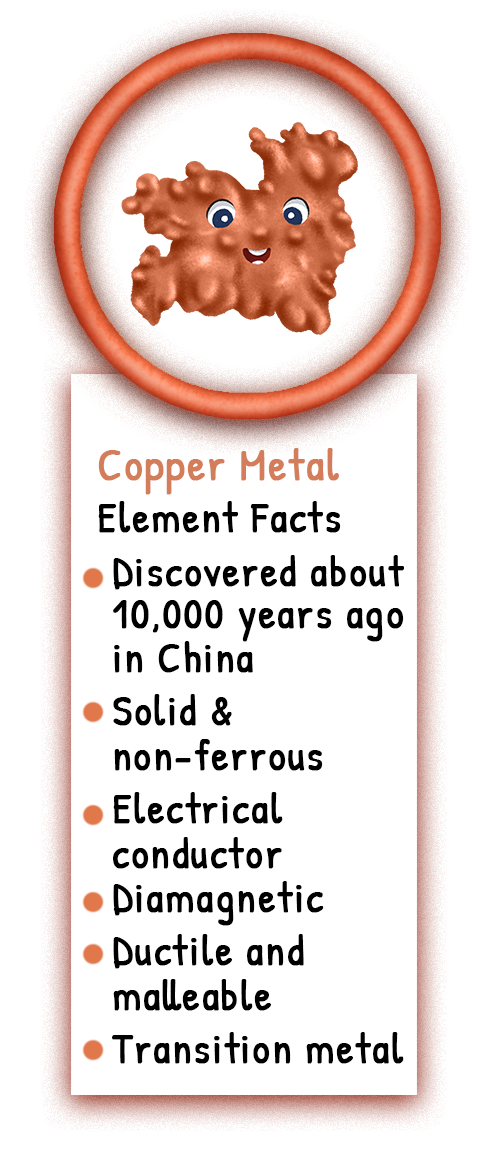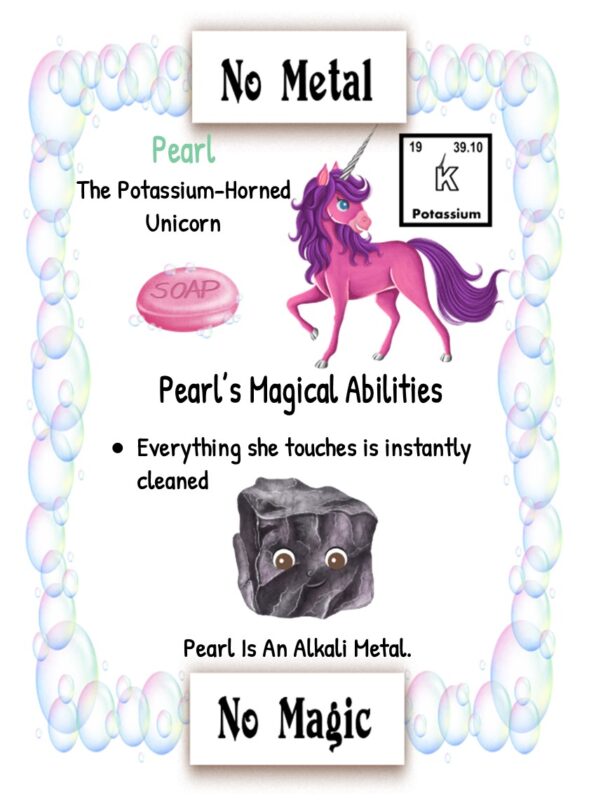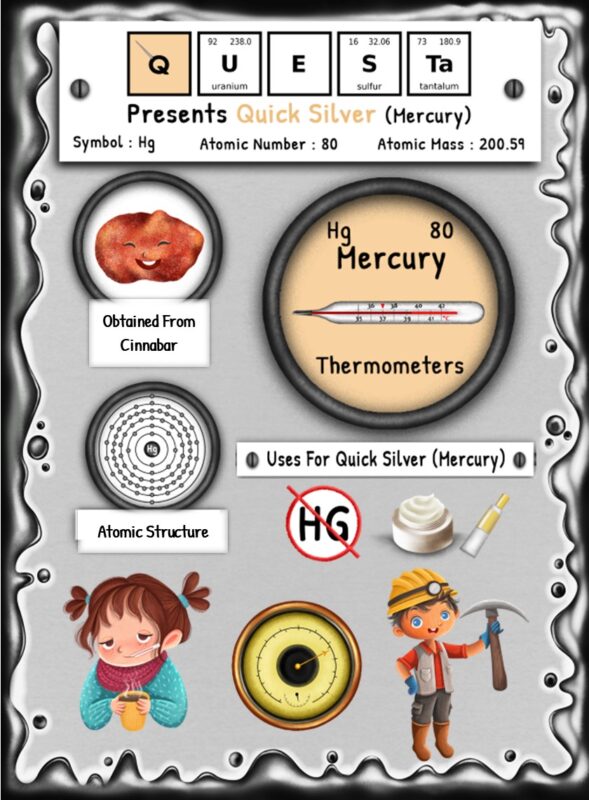Unraveling the Magic of Copper: Exploring the Wonders of this Elemental Marvel

Unraveling the Magic of Copper: Exploring the Wonders of this Elemental Marvel
Copper is a fascinating element that has been used by human beings for thousands of years. It’s a metal that can be found in many different forms, from electrical wiring to jewelry. Its malleability, anti-bacterial properties, and conductivity make it a versatile and valuable material. But copper is more than just a useful metal. There is a magic to copper that has intrigued scientists and artists alike for centuries. In this post, we will explore the wonders of copper, from its history to its uses in modern technology, and why it continues to be a popular material for both functional and decorative purposes.
Copper, known for its lustrous reddish-brown hue, has captivated civilizations for centuries with its remarkable properties and versatile applications. As one of the few elemental metals that exist in its pure form, copper has been cherished for its malleability, conductivity, and resistance to corrosion. Its unique characteristics have made it an indispensable material in various industries, from construction and electrical engineering to telecommunications and even the world of fashion.
Dating back to ancient times, copper has been utilized by countless civilizations, leaving behind a rich legacy. The Egyptians, for instance, recognized the value of this precious metal and adorned their pharaohs with exquisite copper jewelry, showcasing its beauty and prestige. The Romans also revered copper and used it extensively in their architectural marvels, such as the iconic dome of the Pantheon in Rome.
Beyond its aesthetic appeal, copper’s exceptional thermal and electrical conductivity have made it a fundamental component in modern technology. From wiring and electrical circuits to electronic devices and power transmission systems, copper’s ability to efficiently conduct electricity has revolutionized the way we communicate, transport energy, and power our homes and businesses.
Furthermore, copper’s antimicrobial properties have garnered significant attention in recent years. Studies have shown that copper surfaces can effectively eliminate bacteria and viruses, making it a valuable asset in healthcare settings, where reducing the risk of infections is paramount. This inherent quality has also led to the incorporation of copper in everyday items like doorknobs, handrails, and even hospital equipment to create cleaner and safer environments.
As we delve deeper into the world of copper, we will uncover the fascinating applications and innovations that have emerged from this elemental marvel. From its role in sustainable energy solutions to its contribution to artistic endeavors, copper continues to astonish us with its versatility and potential. So, join us on this journey as we unravel the magic of copper and explore the wonders that this extraordinary metal has to offer.
Copper, a metal that has captivated humankind for centuries, holds a rich history and deep significance in various aspects of our lives. From ancient civilizations to modern industries, the allure of copper has remained unwavering.
Dating back to around 9000 BCE, copper was one of the earliest metals to be discovered and utilized by humans. Its malleability, durability, and conductivity made it an invaluable material for early civilizations. The first evidence of copper smelting and shaping can be traced to the ancient Mesopotamians, who used it to create tools, weapons, and decorative objects.
As civilizations progressed, copper continued to hold a prominent role. The Egyptians revered copper as a symbol of power and used it extensively in their artwork, jewelry, and even in the construction of their awe-inspiring pyramids. The Greeks, recognizing its medicinal properties, utilized copper for healing wounds and purifying water.
The importance of copper transcended cultural boundaries. In China, copper became a symbol of wealth and prosperity, often used to create intricate coins and artifacts. The Native Americans, particularly the Native Americans of the Great Lakes region, regarded copper as a sacred metal, utilizing it in religious ceremonies and creating stunning copper ornaments.
In modern times, copper’s significance has expanded beyond its historical and cultural value. Its exceptional conductivity makes it an indispensable component of electrical wiring, ensuring the efficient transmission of power in homes, buildings, and industries worldwide. Additionally, its antimicrobial properties have gained recognition in the medical field, with copper being used to reduce the spread of harmful bacteria in healthcare settings.
The history and significance of copper truly unravel the magic behind this elemental marvel. Its enduring presence throughout human civilization, from ancient times to the present day, showcases its versatility and indispensability. As we explore the wonders of copper, we discover a metal that has shaped our past and continues to shape our future.
Copper, with its radiant reddish-brown hue, holds within it a plethora of unique properties that make it a truly remarkable metal. This elemental marvel has been revered and utilized by civilizations throughout history for its versatility and distinct characteristics.
One of the most notable properties of copper is its high electrical conductivity. It ranks second only to silver in terms of conductivity, making it an invaluable material in the field of electrical engineering. From power transmission lines to intricate circuitry, copper ensures efficient electricity flow, minimizing energy loss and maximizing performance.
Another fascinating quality of copper is its exceptional thermal conductivity. This property allows copper to rapidly transfer heat, making it ideal for applications such as heat exchangers, radiators, and cookware. Its ability to distribute and dissipate heat evenly is unmatched, ensuring optimal performance and temperature regulation.
Copper also possesses remarkable antimicrobial properties. Studies have shown that copper surfaces have the ability to kill bacteria, viruses, and fungi, making it a hygienic choice for various applications. Hospitals, public spaces, and even everyday objects like doorknobs and handrails can benefit from the antimicrobial power of copper, reducing the risk of infections and promoting a healthier environment.
In addition, copper is highly malleable and ductile, meaning it can be easily shaped and formed into intricate designs without compromising its structural integrity. This characteristic makes copper a favored material in the creation of exquisite jewelry, decorative artwork, and architectural elements that stand the test of time.
Furthermore, copper is resistant to corrosion, allowing it to withstand the ravages of time and exposure to various environmental factors. This durability makes copper an ideal choice for outdoor applications, such as roofing, gutters, and statues, where longevity and aesthetic appeal are paramount.
The unique properties of copper truly set it apart from other metals, making it an indispensable component in a wide range of industries and applications. From its conductivity and thermal efficiency to its antimicrobial nature and aesthetic versatility, copper continues to captivate and inspire with its enchanting qualities.
Copper, with its mesmerizing reddish-brown hue, has long been valued for its versatility and remarkable properties. This extraordinary metal plays a crucial role in various industries, making it an indispensable component in our everyday lives.
In the construction industry, copper has proven its worth as an essential material for electrical wiring and plumbing systems. Its excellent conductivity and corrosion resistance make it the go-to choice for transmitting electricity and ensuring reliable connections. From residential buildings to towering skyscrapers, copper silently works behind the scenes, providing a reliable and efficient infrastructure.
The automotive industry also heavily relies on copper due to its exceptional thermal conductivity. It is used in radiators, heat exchangers, and electrical systems, ensuring efficient cooling and smooth operation of vehicles even under extreme conditions. Copper’s durability and malleability allow manufacturers to shape it into intricate parts and components, contributing to the overall performance and safety of automobiles.
Copper’s antimicrobial properties have made it an integral element in the healthcare sector. It is widely used in medical tools, equipment, and surfaces to inhibit the growth of bacteria and reduce the risk of infections. Its effectiveness against harmful microorganisms has been scientifically proven, making it an invaluable ally in maintaining a sterile and safe healthcare environment.
Furthermore, the electronics industry heavily relies on copper for its high electrical and thermal conductivity. It is the preferred material for printed circuit boards (PCBs), connectors, and wiring, enabling the smooth flow of electricity within electronic devices. From smartphones to computers, copper plays a vital role in powering our modern gadgets and ensuring seamless communication.
Moreover, the renewable energy sector owes much of its success to copper. Solar panels and wind turbines rely on copper wiring to efficiently harness and transmit clean energy. Its ability to withstand harsh weather conditions and its high conductivity make it an ideal choice for renewable energy infrastructure, contributing to a sustainable future.
In conclusion, copper’s versatility and remarkable properties have earned it a prominent place in various industries. From construction and automotive to healthcare and electronics, its role is irreplaceable. This elemental marvel continues to unravel its magic, shaping our world and driving innovation across diverse sectors.
Copper, a versatile metal that has been used for centuries, holds a special place in the world of electrical conductivity. With its remarkable ability to conduct electricity, copper has become an indispensable material in various industries, from electronics to power transmission.
The unique properties of copper make it an ideal choice for electrical applications. It boasts high electrical conductivity, meaning it allows electric current to flow through it with minimal resistance. This property is critical in ensuring efficient energy transfer and minimizing power loss. Compared to other metals, such as aluminum or steel, copper offers superior conductivity, making it the go-to material for electrical wiring, circuits, and connections.
The importance of copper in electrical conductivity extends beyond its efficiency. Copper is also highly ductile, which means it can be easily shaped and bent without breaking. This malleability allows for the fabrication of intricate electrical components and ensures a secure and reliable connection between different parts of an electrical system.
Furthermore, copper exhibits excellent thermal conductivity, enabling efficient heat dissipation. In electrical devices that generate heat during operation, such as transformers or motors, copper helps to dissipate the heat, preventing overheating and ensuring optimal performance and longevity.
Another noteworthy aspect of copper is its resistance to corrosion. Unlike many other metals, copper forms a protective oxide layer when exposed to air or moisture. This layer acts as a shield, safeguarding the metal against corrosion and maintaining its electrical conductivity over time. This resistance to corrosion makes copper a durable choice for electrical applications, ensuring long-lasting and reliable performance.

In summary, the importance of copper in electrical conductivity cannot be overstated. Its high conductivity, malleability, thermal conductivity, and corrosion resistance make it an indispensable material in countless electrical systems and devices. Whether you’re powering your home, charging your smartphone, or transmitting electricity across vast distances, chances are copper is playing a vital role behind the scenes, unraveling its magic in the world of electrical engineering.
Copper, with its alluring reddish-brown hue and remarkable durability, has been a favorite material in architecture and design for centuries. From ancient civilizations to modern skyscrapers, copper has left an indelible mark on the world of aesthetics and functionality.
One of the most captivating aspects of copper in architecture is its ability to develop a beautiful patina over time. As the metal interacts with the air and elements, it undergoes a process called oxidation, gradually transforming its surface into shades of green, teal, and blue. This natural aging process adds character and depth to buildings, making them blend harmoniously with their surroundings.
Not only does copper possess an innate ability to age gracefully, but it also boasts exceptional versatility. Its malleability allows architects and designers to shape it into intricate details, intricate patterns, and bold forms, enabling the creation of visually striking facades, roof claddings, and decorative elements. Copper can be seamlessly integrated into both traditional and contemporary designs, effortlessly bridging the gap between the past and the present.
Beyond its aesthetic allure, copper also boasts a range of practical benefits that make it an ideal choice for architectural applications. Its outstanding corrosion resistance ensures longevity, making it suitable for enduring harsh weather conditions and extreme temperatures. Copper’s thermal conductivity properties contribute to energy efficiency, facilitating heat transfer and reducing the need for excessive insulation. Additionally, copper is inherently antimicrobial, making it a hygienic choice for surfaces where cleanliness is paramount, such as hospitals or public spaces.
Architects and designers around the world continue to harness the magic of copper, pushing the boundaries of what can be achieved with this elemental marvel. From iconic landmarks such as the Statue of Liberty to contemporary masterpieces like the Burj Khalifa, copper’s timeless appeal persists, continuing to captivate and inspire.
In conclusion, copper’s presence in architecture and design is nothing short of extraordinary. From its captivating ability to age gracefully to its versatile nature, this elemental marvel adds a touch of elegance and functionality to any structure. Whether it’s a historic building or a modern masterpiece, copper stands as a testament to the enduring allure of this remarkable material.
Copper, often referred to as the “elemental marvel,” has been admired for its captivating beauty and remarkable conductivity. However, beyond its aesthetic appeal and practical uses, copper also holds a significant place in the realm of health and traditional medicine.
For centuries, copper has been recognized for its potential health benefits. Ancient civilizations, such as the Egyptians and Greeks, were aware of its healing properties and utilized it in various forms. Copper was believed to possess antimicrobial properties, making it an ideal material for medical instruments and utensils. Its ability to inhibit the growth of bacteria and other pathogens has been scientifically validated, making copper a valuable tool in combating infections and promoting hygiene.
Furthermore, copper has been associated with numerous health benefits when consumed or applied topically. It is an essential trace mineral that plays a vital role in the proper functioning of the human body. Copper is involved in the production of red blood cells, collagen synthesis, and the maintenance of a healthy immune system.
In traditional medicine practices, copper has been used to alleviate symptoms associated with arthritis and joint pain. It is believed that copper possesses anti-inflammatory properties, making it a natural remedy for reducing inflammation and promoting joint health. Copper bracelets, worn by many individuals seeking relief from arthritis, are believed to help in reducing pain and stiffness.
Additionally, copper is known to assist in the absorption of iron, another essential mineral for the body. This interaction between copper and iron is crucial for the production of hemoglobin and the prevention of anemia. Copper also aids in the proper functioning of the brain, supporting cognitive function and promoting overall mental well-being.
While the scientific community continues to explore the potential health benefits of copper, it is important to note that copper supplementation or alternative forms of copper therapy should be approached with caution. As with any mineral or supplement, it is advisable to consult with healthcare professionals before incorporating copper into your wellness routine.
In conclusion, copper’s enchanting allure extends beyond its physical attributes. Its involvement in traditional medicine and potential health benefits make it a fascinating subject of exploration. Whether admired for its aesthetic appeal or revered for its potential healing properties, copper continues to weave its magic, captivating our imaginations and enhancing our understanding of this elemental marvel.
When it comes to sustainability and recyclability, copper is truly a marvel among elements. Known for its exceptional durability and resistance to corrosion, copper is a metal that can be used and reused in various industries without compromising its quality.
One of the key aspects that makes copper sustainable is its long lifespan. Unlike other materials that deteriorate over time, copper is incredibly durable and can last for decades, if not centuries. This means that products made from copper, such as wiring, piping, and architectural elements, require fewer replacements, resulting in less waste and a reduced carbon footprint.
Furthermore, copper is highly recyclable, making it an environmentally friendly choice. In fact, copper is one of the most recycled metals in the world, with a recycling rate of over 90%. This means that old copper products can be easily collected, processed, and transformed into new copper items, all while conserving valuable natural resources.
The recycling process of copper is both energy-efficient and cost-effective. It requires significantly less energy compared to the extraction and production of virgin copper. Additionally, recycling copper helps to reduce greenhouse gas emissions and diminishes the need for mining activities, which can have a detrimental impact on the environment.
In addition to its sustainability and recyclability, copper is also antibacterial, making it an ideal choice for various applications. Its inherent properties inhibit the growth of bacteria, viruses, and fungi, making copper surfaces a hygienic option in healthcare settings, public spaces, and even in our everyday lives.
In conclusion, copper’s sustainability and recyclability are not only beneficial for the environment but also for industries and consumers alike. By choosing copper, we can actively contribute to a greener future, reduce waste, conserve resources, and enjoy the many wonders of this elemental marvel.
Copper, with its captivating sheen and remarkable properties, has been utilized in the construction and preservation of numerous famous landmarks and artifacts throughout history. Its versatility and durability have made it a preferred choice for architects, artists, and engineers alike.
One iconic example of copper’s grandeur can be witnessed in the Statue of Liberty, a symbol of freedom and enlightenment. Standing tall on Liberty Island in New York Harbor, Lady Liberty proudly displays a stunning copper exterior. Over time, this majestic statue has undergone a natural process called patination, where the copper surface develops a distinct greenish hue due to exposure to the elements. This patina adds a sense of age and character to the statue, enhancing its aesthetic appeal.
Another world-renowned landmark showcasing the beauty of copper is the domed roof of the majestic St. Paul’s Cathedral in London. Designed by Sir Christopher Wren, this architectural masterpiece features a striking dome covered in copper sheets. The gleaming surface of the copper dome reflects sunlight, creating a breathtaking sight that has captured the imaginations of visitors for centuries.
Copper has also been integral in the preservation of precious artifacts, such as the copper panels of the Gates of Paradise in Florence, Italy. These intricately designed bronze doors, created by the renowned artist Lorenzo Ghiberti, depict scenes from the Old Testament. The copper panels not only contribute to the visual allure of the doors but also provide protection against corrosion, ensuring the longevity of these historical treasures.
In addition to these prominent examples, copper has been utilized in various architectural elements, sculptures, and decorative features around the world. From the ornate rooftop of the Stockholm City Hall in Sweden to the grandeur of the Church of the Savior on Spilled Blood in St. Petersburg, Russia, copper continues to leave an indelible mark on the world of art and architecture.
The use of copper in these famous landmarks and artifacts not only highlights its aesthetic appeal but also showcases its remarkable durability and ability to withstand the test of time. As we unravel the magic of copper, we discover that it is not merely an elemental marvel but a medium that has shaped the world’s architectural and artistic heritage.
Copper, with its stunning reddish-brown hue, has captivated mankind for centuries. From ancient artifacts to modern-day home decor, copper items add a touch of elegance and sophistication to any space. However, to keep your copper treasures looking their best, proper care and maintenance are essential.
First and foremost, it is important to understand that copper naturally oxidizes over time, forming a layer of patina. While some people appreciate the aged look it brings, others prefer the bright and shiny appearance of newly polished copper. If you fall into the latter category, fear not, as there are several effective methods to restore copper’s original luster.
One simple and natural way to clean copper is by using a mixture of lemon juice and salt. Cut a lemon in half and sprinkle salt on the exposed surface. Gently rub the lemon on the copper surface, allowing the acidic juice to dissolve the tarnish. Rinse the item with water and pat it dry with a soft cloth. Voila! Your copper piece will regain its radiant glow.
Alternatively, you can create a paste using vinegar, flour, and salt. Mix equal parts of these ingredients until a thick paste forms. Apply the paste to the copper surface and let it sit for around 1 hour. Afterward, rinse the item with water and buff it with a clean cloth to reveal its renewed brilliance.
To prevent your copper items from tarnishing too quickly, it is advisable to store them in a dry and non-humid environment. Moisture can accelerate the oxidation process, so keep your copper treasures away from areas prone to high humidity, such as bathrooms or basements.
Regular dusting is also crucial in maintaining copper’s allure. Use a soft cloth or a feather duster to gently remove any accumulated dust or debris. Avoid using abrasive materials or harsh chemicals, as they can damage the copper’s surface.
In the case of copper cookware, it is essential to follow specific care instructions to preserve its functionality and beauty. Avoid using abrasive scrubbing pads or harsh detergents when cleaning copper pots and pans. Instead, opt for mild dish soap and non-abrasive sponges to gently clean the surface. Additionally, to maintain the protective lining of copper cookware, it is recommended to avoid cooking highly acidic or alkaline foods for prolonged periods.
By following these simple care and maintenance tips, you can ensure that your copper items remain a source of admiration and beauty for years to come. Embrace the magic of this elemental marvel and let the allure of copper continue to mesmerize both you and your guests.
We hope you enjoyed our exploration into the wonders of copper. This versatile and fascinating element has a rich history and a wide range of practical uses. From its antimicrobial properties to its conductivity and beautiful patina, copper truly is a marvel of the elemental world. We hope that this blog post has deepened your appreciation for copper and its many applications. Whether you’re a scientist, a designer, or simply someone with an interest in the world around us, copper’s magic is truly worth unraveling. Thank you for joining us on this journey, and may your future encounters with copper be filled with awe and admiration.
This article is brought to you by Sybrina Durant, the author of the middle grade picture book, Magical Elements of the Periodic Table Presented Alphabetically By The Metal Horn Unicorns. Learn More. In that book Copper is presented by the unicorn, Cuprum. Read Cuprum’s Story.

Sybrina Publishing Offers Fun Activities Based On The Book
Magical Elements of the Periodic Table Presented Alphabetically By The Metal Horn Unicorns
Browse The Magical Periodic Table Elements Store
Inter-Active Unicorn-Themed Periodic Table from Magical Elements of the Periodic Table Presented Alphabetically by The Metal Horn Unicorns
Click here to use This Inter-Active Viewer To Learn More About The Elements Each Unicorn Represents On This Periodic Table.
Want To Hear The No Metal No Magic Song?
100 Unicorn Tee Shirt Designs – Browse To Pick Your Favorite
They are available in short sleeve tees, long sleeve tees, tank tops, sweat shirts for all ages.








